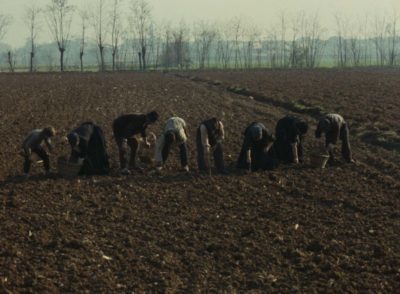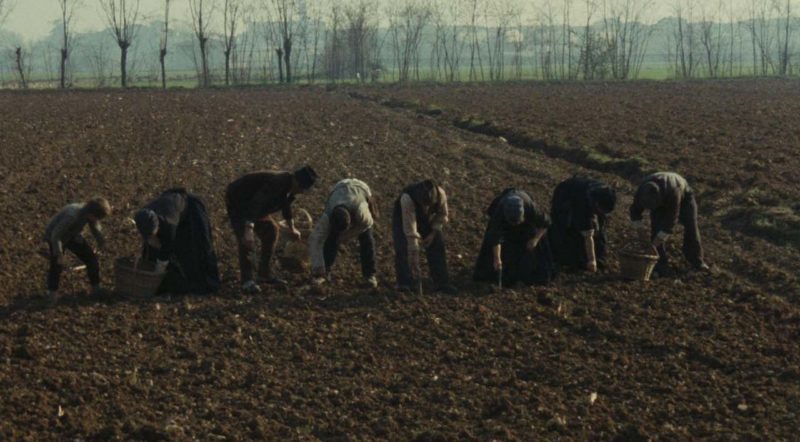REVIEW: ‘Tree of Wooden Clogs’ is so realistic it’s almost like a documentary

The Tree of Wooden Clogs, the Ermanno Olmi film that’s currently playing at New York City’s Film Forum, is a pitch-perfect example of cinematic neorealism. The 1978 Palme d’Or winner depicts the life of several peasant farmers in Bergamo, Italy, near the end of the 19th century. The scenes in the three-hour epic are so naturalistic and organic that audience members might take the film as a documentary. The cast, made up of locals, work through the seasons and experience the many trying obstacles of an impoverished life, yet around the edges of these Roman Catholic families is hope, humor and humanity.
This is a classic worthy of the highest regard.
Olmi’s movie keeps the narrative tightly focused on four families who live as farmers on a landowner’s estate. Their daily life consists of the ebb and flow of farming the fertile fields around them. One grandfather believes he has the key to tomato success and uses chicken droppings to produce a crop a couple weeks ahead of the other farmers. This allows him to sell his beautiful, plump fruit at the local market before anyone else has picked their tomatoes. These small victories are what make The Tree of Wooden Clogs a marvel. The successes are rare and sweet; the setbacks are devastating and life-altering.
Another storyline follows two young people who have fallen in love. They meet on a deserted roadside away from the scrutinizing stares of their parents. He asks her for a kiss, and she reminds him of the customs they must follow. The audience follows them on their wedding day and an eventual trip to Milan to meet the bride’s aunt, who is a nun at an orphanage.
Another storyline, and perhaps the saddest of the many threads in this familial fabric, involves a widow with many young mouths to feed. She tries to earn some money as the village launderer, but keeping up with the cost of food and clothes is too difficult. Her predicament grows so dire that she seriously considers the local priest’s offer of having her two youngest children taken in by the church.
There’s a case to be made that The Tree of Wooden Clogs is missing a plot; however, that’s par the course for neorealism. Olmi is more interested in showcasing a narrative that speaks to the daily and seasonal grind of farmers living with little means. He could have spun a climatic tale involving the changes in society and the opportunities and challenges of the impending 20th century. Instead, he lets some of these plot devices linger in the background, supplanted by the documentation of farming and all of its tribulations.
The audience first realizes there’s a world outside these four families when that young married couple heads to Milan. There’s talk — ever so brief — of black smoke on the horizon and how it’s the result of a clash between the authorities and protestors. Few details are given, so it’s up to the viewers to connect the dots and see how the politics of the time may soon encroach on the rural, pastoral setting back at the farm.
What’s also interesting about watching The Tree of Wooden Clogs in 2016 is the historical knowledge of what happened to so many Italian communities at the turn of the century. Many of these peasant farmers eventually became first-generation Americans who landed at Ellis Island and formed communities in the United States. This epic drama allows the audience to see a slice of life from the pre-immigration days and perhaps an understanding of why people are motivated to leave their familiar surroundings for the financial opportunities on the horizon.
By John Soltes / Publisher / John@HollywoodSoapbox.com
The Tree of Wooden Clogs (1978), written and directed by Ermanno Olmi, is playing in a new 4K restoration at New York City’s Film Forum. The drama, which runs 186 minutes, stars Luigi Ornaghi, Omar Brignoli, Francesca Moriggi and Teresa Brescianini. Click here for more information and tickets. Rating: 




